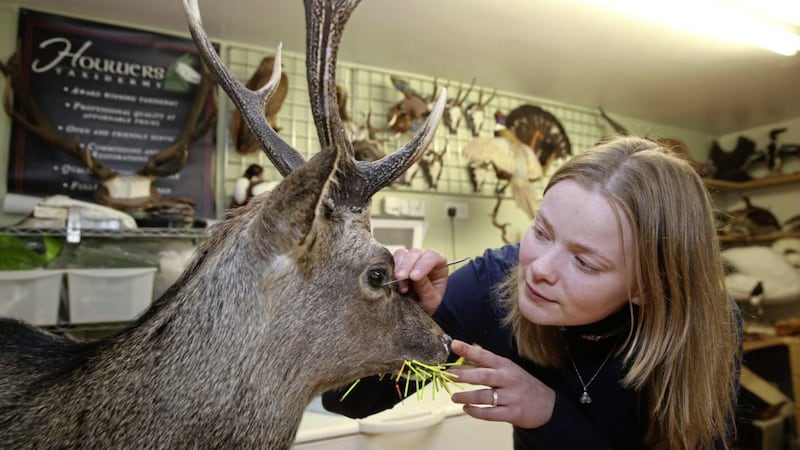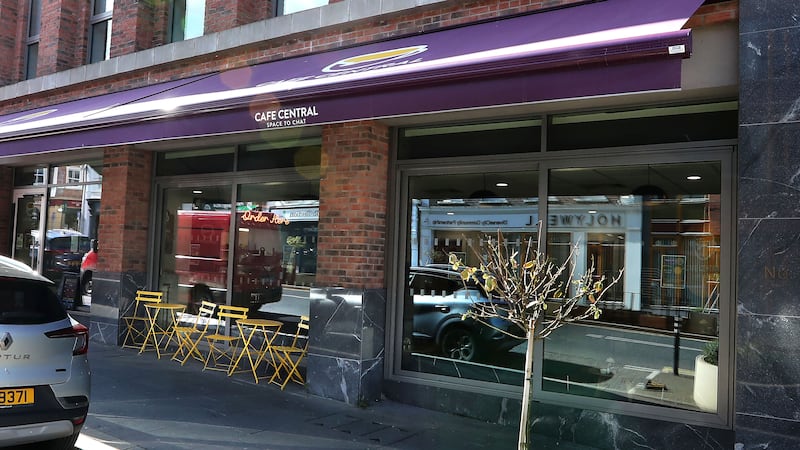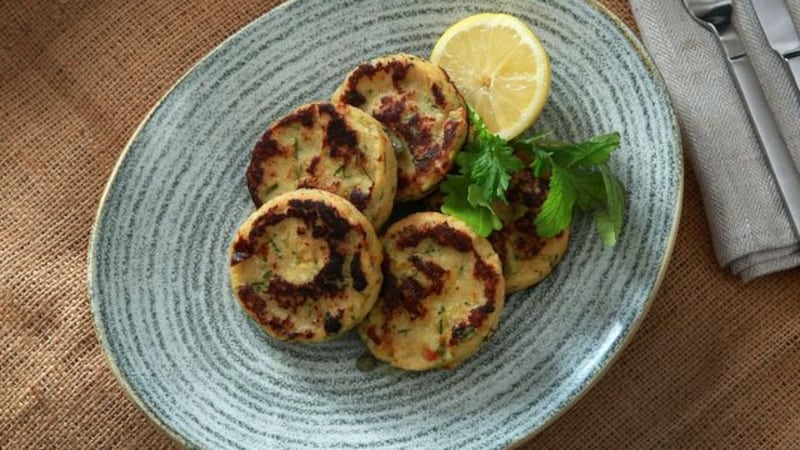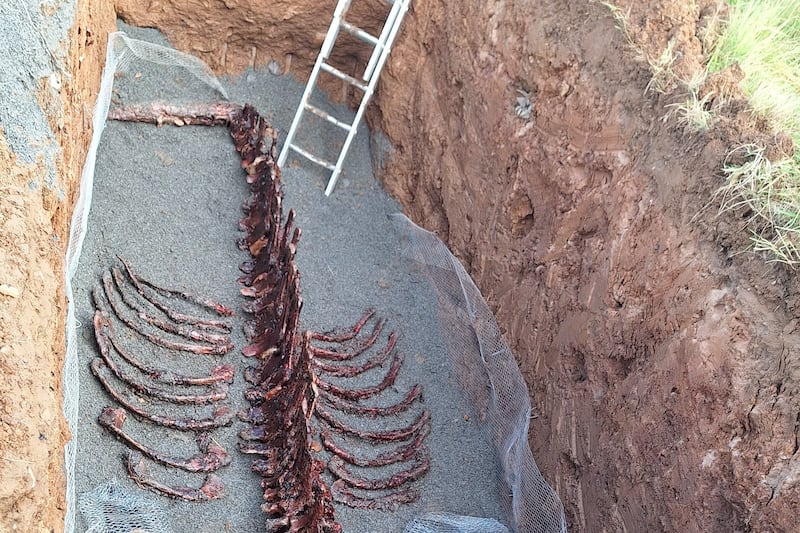PAINTING a glass eye for a deer, collecting a road kill animal left in a bag on her back door, individually attaching feathers with a pair of tweezers to a bird of prey, introducing a blind child to a fox for the first time in their life or bringing furs or skulls to the set of Game of Thrones – it's all in a day's work for 31-year-old Ingrid Houwers.
Taxidermy may not be viewed as the most glamorous of jobs, but for Dutch-born Ingrid, it's a profession that brings her much satisfaction and combines her love of wildlife preservation with education.
"My main passion is educating people about wildlife and ensuring nature is respected and protected," says Ingrid, who relocated to Co Down 12 years ago after falling in love with a Bangor man.
Brought up in rural Holland, living at the edge of a forest, she spent her childhood birdwatching and exploring the woods.
"As a kid me and my dad used to go through the woods and find little snail shells or bones and get the encyclopaedia out and see if we could identify them," she recalls.
Her love of animals initially drew Ingrid to a career in veterinary medicine.
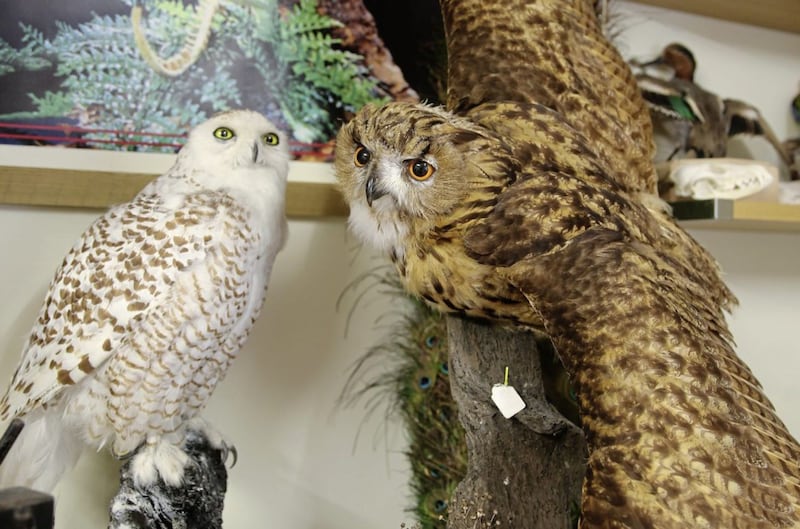
"I was studying to be a vet, but I also did wildlife photography, portraiture and painting in my spare time. It was during my medical studies that I decided to go with my heart rather than my head and switched to art academy instead. I then combined my newly gained knowledge of sculpture with my knowledge of anatomy and wildlife to make taxidermy my full-time career."
Destined for this job, Ingrid informs me that he surname literally translates as "bore tusks", and the talented silversmith even wears a family crest, which she made from silver and carved tusks, around her neck.
She is keen to stress that Houwers Taxidermy is an ethical business – over 90 per cent of the animals she receives die as a result of road kill. Others come from pest control and legal hunting and all have an official paperwork trail.
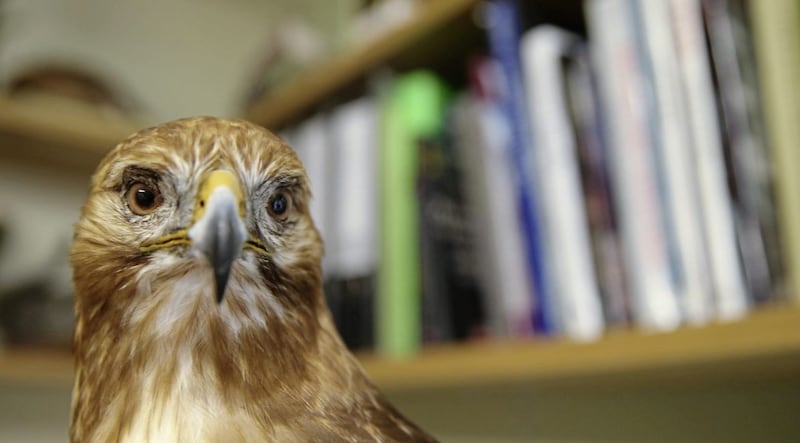
"There is a misconception that taxidermist's kill the animals. I predominantly work with the National Trust, Ulster Wildlife and Ulster Museum. As regards wildlife education, everything has it's place – even rats."
While she can "stop time" in preserving an animal's life, when asked to work on people's pets, Ingrid admits she tries to convince them they would be better with a portrait.
"They come to me in a moment of deep grief thinking I can bring their beloved pet back. I'm good at taxidermy, but I can't do magic. I always tell people to get the pet frozen with their vet in the samples freezer for a few weeks and let the grieving process start to take place before making a decision."
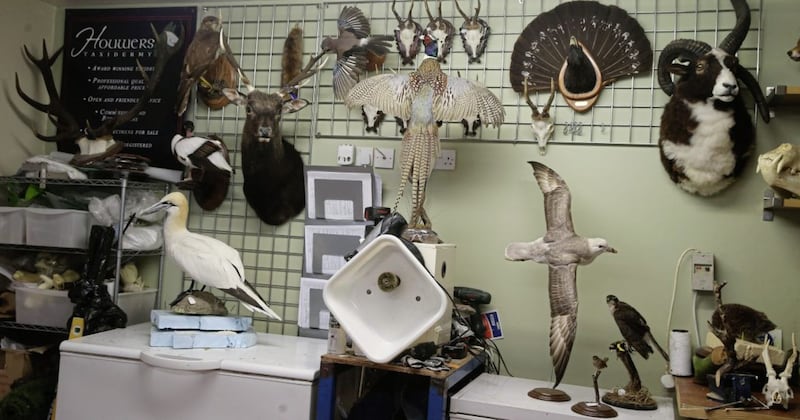
Another pre-conception of taxidermy is that the models are smelly and that all kinds of things are hidden beneath the feathers or fur. In her Bangor studio Ingrid quashes all concerns as she shows me the foam moulds she creates of the specimen's body.
"Taxidermy needs to move away from the Victorian scariness and stiffness and be viewed as a moment in life. Apart from the skin and antlers, everything used is just carved, moulded and cast," says Ingrid, who talks me through the time-consuming process of taxidermy.
Once a specimen is received it is placed in a plastic bag and frozen. When working on the taxidermy project, the animal's skin is removed and washed thoroughly. The anatomical structure of the animal, along with other measurements such as eyes and key feature placements, are carefully noted.
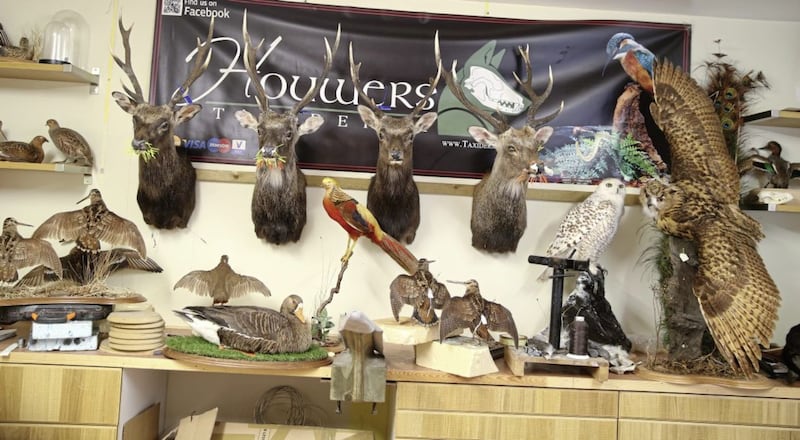
The remainder of the carcass is incinerated and the body is resculpted using a foam cast and wire. Once the skin has been treated and tanned for up to two weeks, creating a leather, it goes back over the new form. Feathers or fur are carefully placed back in the right areas and skin tones are touched up with fine detail paintwork or airbrushing.
"The more time you spend on the piece, reconstructing habitat, the more you complement the animal, the more kids can learn form it and the more natural it looks," adds Ingrid.
A large part of her job involves educational work – whether lending animals to schools for art classes, talks in parks and museums or visiting special schools, where those with visual impairments can touch the animals she has preserved and experience wildlife for the very first time.
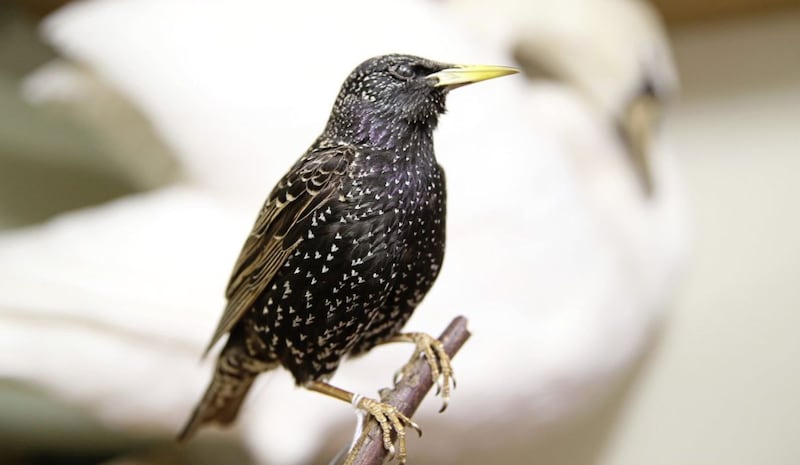
"It's all very well describing a fox to a child who has never seen one, but for them to feel their tail is amazing. It gives them a window into a world they would never experience otherwise."
Ingrid has also educated a much wider audience through her work being shown worldwide as part of the hit HBO series Game of Thrones. She is responsible or the vast majority of animal fur, bones and skulls used in the show's set design and costumes. She has also provided some animals.
"The famed one was the one from the Red Wedding massacre, which was a big taxidermy swan. Another was an action pigeon in season six. I had to make a prop pigeon, where if you pushed it the head fell off," she recalls.
Last season viewers would have seen the sword stand in Horn Hill Castle, which featured deer antlers she provided.
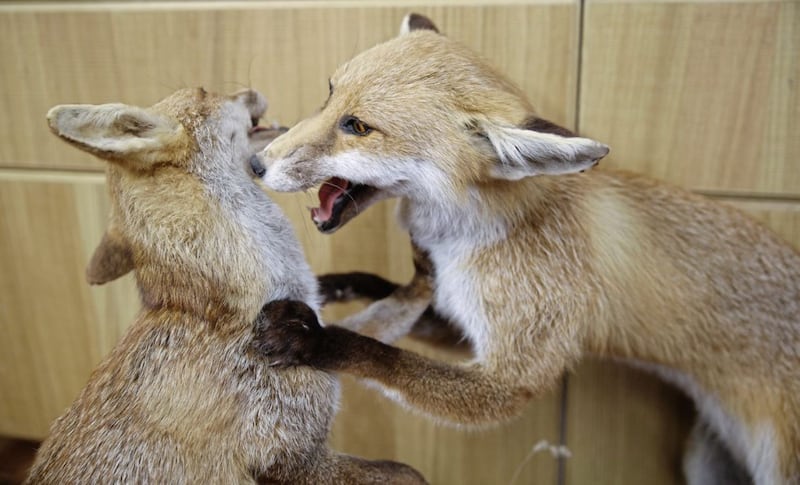
"It's been an amazing experience. We're now on season eight and I've been working with them since the start," says the self-confessed Game of Thrones fan.
While Game of Thrones coming near the end of filming, Ingrid's talented has been recognised in the film industry and she has already been given some commissions for future screen work.
In her studio, Ingrid is surrounded by cockerels, badgers, foxes, owls, deer and pheasants. You feel like you are being watched from every angle and I ask, does she enjoy the company?
"I see them more as artwork than animals," she quickly replies.
And has she a favourite she has worked on?
"Everything is absolutely stunning and beautiful in its own right – from the tiny sparrows to the tiger skin I've restored. Nothing is special above anything else. However, I do have a soft spot for members of the weasel family. They have such expression in their heads and always look so curious and inquisitive."
- For further information visit Taxidermyni.com.
